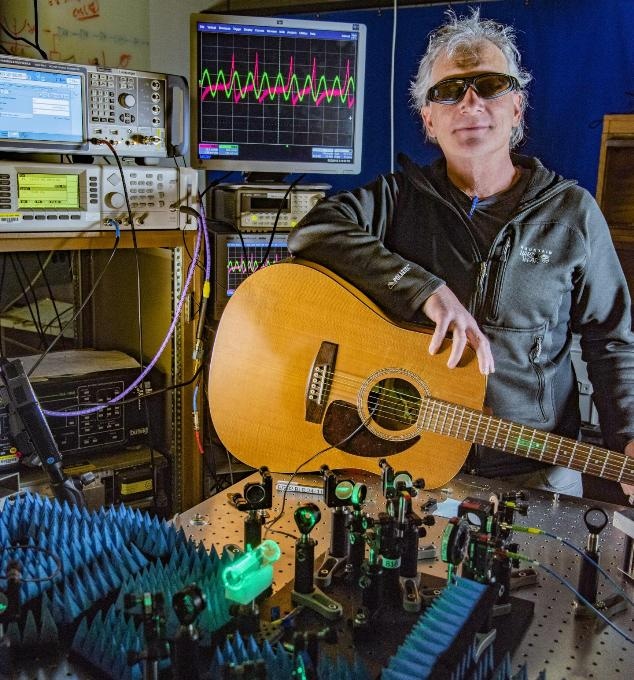Jun 19 2019
Although sounding similar to an old-school vinyl record, the origin of the unique crackle in the music streamed into Chris Holloway’s laboratory is atomic.
 This is C.L. Holloway in his atomic-recording studio. The stereo recording of Queen’s “Under Pressure” with an atom-based receiver shows the simultaneous detection of the vocal and instrumental part of a song by two atomic species. This illustrates that the atom receiver can receive multi-path communication signals simultaneously. (Image credit: J. Burrus at NIST)
This is C.L. Holloway in his atomic-recording studio. The stereo recording of Queen’s “Under Pressure” with an atom-based receiver shows the simultaneous detection of the vocal and instrumental part of a song by two atomic species. This illustrates that the atom receiver can receive multi-path communication signals simultaneously. (Image credit: J. Burrus at NIST)
The team of researchers from the National Institute for Standards and Technology, Boulder, Colorado, invested six long years to find a means for the direct measurement of electric fields using atoms. Therefore, no one can blame them for enjoying a little with their new technology.
“My vision is to cut a CD in the lab—our studio—at some point and have the first CD recorded with Rydberg atoms,” stated Holloway. Although he does not hope for the lower sound quality of the atomic-recording to be an alternative digital music recording, the group of scientists has been looking for ways to apply this “entertaining” example of atomic sensing in futuristic communication devices.
“Atom-based antennas might give us a better way of picking up audio data in the presence of noise, potentially even the very weak signals transmitted in deep space communications,” stated Holloway, who has explained about the atomic receiver in AIP Advances, from AIP Publishing.
The atoms under consideration—Rydberg atoms—are atoms stimulated by lasers into a high energy state responding in a measurable way to radio waves, or an electric field. After discovering a way to evaluate the electric field strength using the Rydberg atoms, Holloway explained it was a comparatively simple step to use the same atoms to record and play back music—beginning with Holloway’s own guitar improvisations in A minor.
The music was encoded onto radio waves quite similar to the way cellphone conversations are encoded onto radio waves for transmission. When the atoms respond to these radio waves, the laser beams that shine through the Rydberg atoms are influenced. These variations are collected by a photodetector, feeding an electric signal into the computer or speaker—and there it is! The atomic radio was developed.
The researchers employed their quantum system to collect stereo—where one atomic species recorded the instrumental and the other one recorded the vocal at two distinct sets of laser frequencies. They chose a Queen track—“Under Pressure”—to investigate whether the system could manage the wide vocal range of Freddie Mercury.
“One of the reasons for cutting stereo was to show that this one receiver can pick up two channels simultaneously, which is difficult with conventional receivers,” stated Holloway, elucidating that despite being the early days for atomic communications, it could be potentially be used to enhance the security of communications.
For the moment, Holloway and his colleagues are staying tuned into atomic radio while making attempts to ascertain how weak a signal can be detected by the Rydberg atoms, as well as the maximum data transfer speeds that can be realized.
They have not overlooked the atomic record they intend to create. They believe that with this, they can inspire the next generation of quantum researchers.